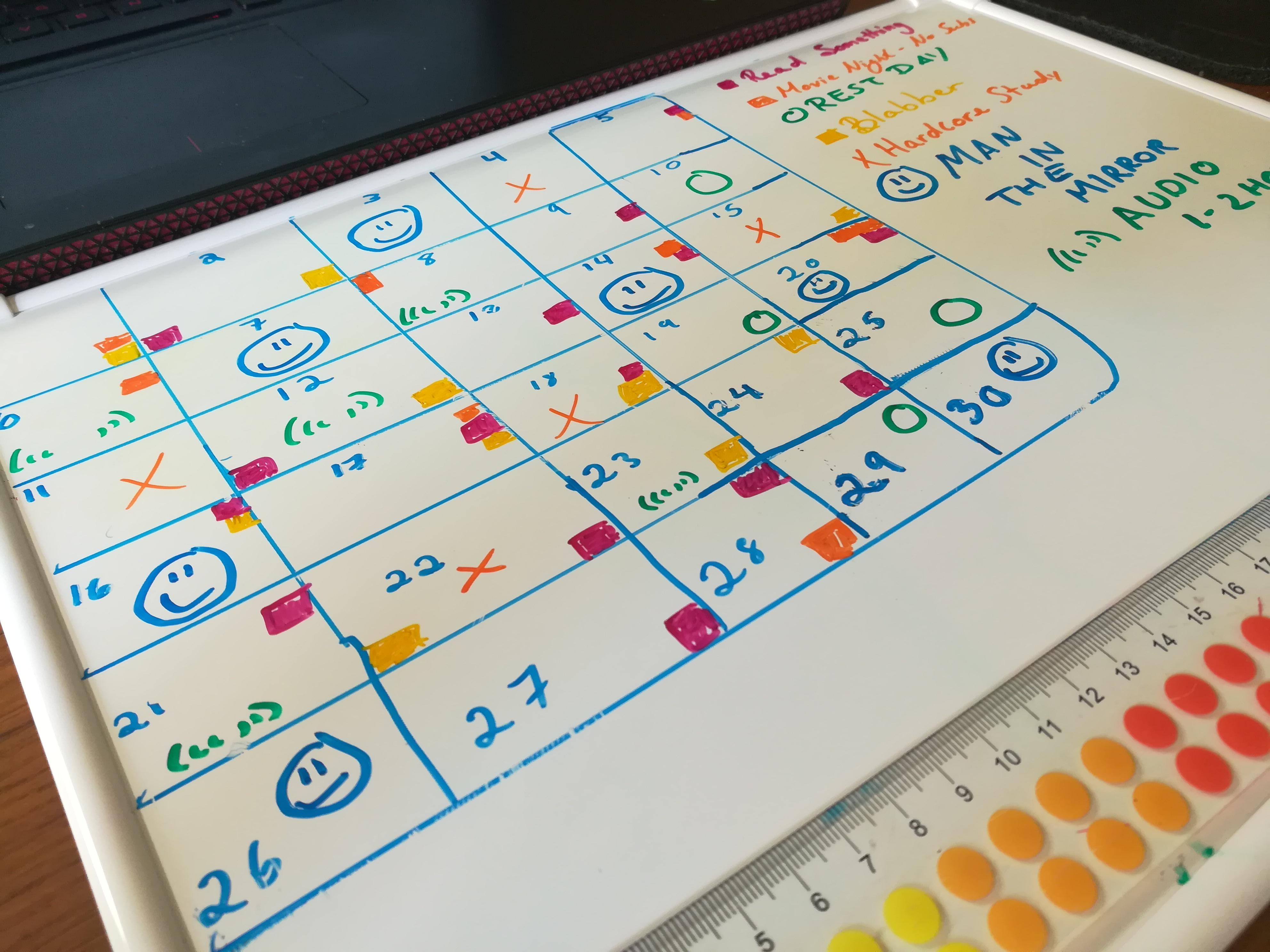What happens when we become demotivated and fall off track from our language learning routine? Well depending on who you are along with your likes and dislikes some things can happen.
- You start making up excuses for not studying
- You start studying other things all of a sudden (things that you aren’t interested in)
- You go days sometimes months without even thinking of studying.
These are common occurrences in any normal learning routine, but why does it happen? For starters, we don’t exactly have the best attention span in the animal kingdom. An average goldfish has a longer attention span than a human being. However, the upside to this is that we are incredible multi-taskers. Now, if multitasking were as effective in language learning as intense concentration, then we wouldn’t have the problem of falling behind on our studies.

What Is The Don’t Break The Chain Technique?
The “Don’t Break The Chain” method isn’t necessarily a new technique. Jerry Seinfeld first named it as a motivational technique that marks the production levels and achievements throughout any given period (monthly, weekly, daily, etc.). Progress is usually kept on a hard copy of a schedule such as a calendar, but phones and other handy devices are also an excellent way to keep track. But, in this series, we are going to improve the technique even further!
Language shouldn’t be thought of as a singular thing. What I mean by that is that we should be looking for different aspects of the language as we start to learn it – personality, grammar, accent, sounds, etc. All of these things contribute to a language. So when you’re linking your chain there should always be diversity in your language learning routine.
For motivational purposes you can try simple things at first:
Color Changing With Notes – Each day, aim to write in a new color. This little trick might seem pointless at first, but once you get to 10 pages or so all in different colors, you’d be amazed at just how much you’ve written. And not to mention your language learning notebook will look like a rainbow.
Day 1 Red, Day 2 Blue, Day 3 Green, Day 4 Purple, Day 5 Black, Day 5 Yellow… Give yourself some bonus points if you find some sparkling ink!
You can even try assigning colors to different parts of the language.
Red – Grammar
Green– Vocabulary
Blue – Alphabet
Sparkling – A mix of everything
You can even use color to keep track of your emotions.
Let’s say that one day you’re feeling a bit under the weather, so you decide to write in blue. If you begin to notice that your notebook is filled with 80% of one color, maybe it’s time to change up your routine. Think of color as a meter to gauge how you are feeling and which days you learn the most.

But What If I Don’t Feel Like Studying On Some Days?
Well, this is a fair question honestly. Sometimes we just don’t have it in us to pick up a notebook and pen. Luckily there are other ways to continue the chain that doesn’t follow the traditional route of studying. As mentioned earlier, language is a multi-faceted form of communication so it should be considered as such. Now, the word ‘study’ doesn’t always have to mean book and paper it can be as simple as speaking for a few minutes a day or listening to some music in your target language.
Blabber About Different Things – If you haven’t heard about the blabbering technique in this series, now’s your chance to give it a quick look up. The idea behind this chain method is to keep the conversation going throughout the progression of the chain. Each day you should be motivated to keep the conversation alive.
Here’s an example:
Day 1 – What will I do today?
Day 2 – How was yesterday?
Day 3 – Who will you hang out with today?
Day 4 – Where did you all go yesterday?
Just make sure you keep it interesting! You’ll be surprised to find out just how many topics hold your interest. 😊
Man In The Mirror – To complement your blabbering you can use the man in the mirror method as a confidence booster. Every morning, face yourself in the mirror and give yourself a peep speech in your target language. This mantra exercise can last for however long you want it to, but make sure you leave the front of the mirror feeling pumped up and ready to go!
Mantras you can say each morning
“I am great.”
“I will master this language.”
“I have potential and purpose.”
“Today is the day that I will learn _______.”
“I won’t give up, not today not ever!”
The list can be as long as you want it to be once it’s inspiring and gets you into your daily routine.
Have A Rest Day
If you feel like you’ve been doing a great job keeping your chain up to standards then you can take a rest day. But, make sure you limit yourself to about four rest days per month. Meaning that you can take one per week. To complement these rest days you can treat yourself to something you enjoy like a favorite food. Even though it’s a rest day it doesn’t hurt to do some light review in the background. Try watching a movie in your target language or listening to some music throughout rest days.
Also, the day before or after your rest day should be used as a reflection period for the progress you’ve made in your chain. Scheduling reflections are important because they show you progress that you don’t realize.
Here are some ideas for a reflection day:
- Make and take your own language test
- Meditate on your study days and what you’ve studied
- Logging your time having studied the language.
This Is Your Chain! Master Your Habits
While the methods in this article are meant to assist you in keeping your motivation while building your chain, it’s essential that you remember that it’s your chain at the end of the day. Everybody’s language learning journey is different, but the thing that makes one journey stand out from the other is PERSISTENCE. Quitting halfway is never a good feeling especially after you’ve already invested so much time and energy into the craft. Your chain is your personalized language learning experience and should represent your motivation and dedication.
Worksheet
Don’t Break The Chain Worksheet





I just want to say that I love your blog since I found it by chance. I always find interesting content here where I learn something new and inspiring. Thank you very much for that! Greetings from Canada